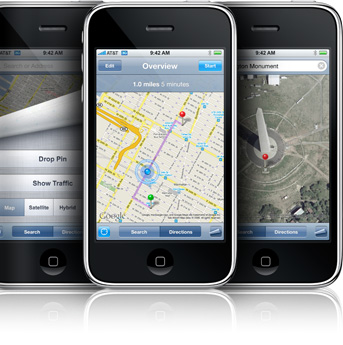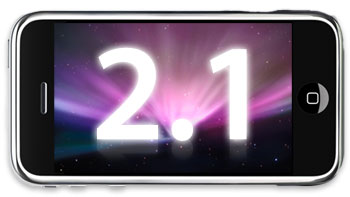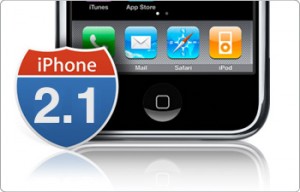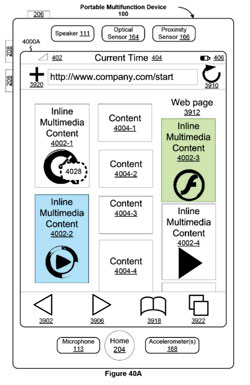News tagged ‘iPhone OS’
OpeniBoot: Linux console on iPhone

This tool allows you to install the OpeniBoot on iPhone and iPod Touch. This offers the possibility of using the Linux console on our Apple devices. Once the code is installed we will be able to choose whether to enter iPhone OS or start the Linux console. The file to install the OpeniBoot can only be run on Linux or Mac. But there will be a package for Windows users soon.
You can see the video-demonstration here:
Where to download QuickOiB:
Apple’s iPhone signal strength is fake?
Firmware version 2.1. It is supposed to display “more accurate” signal strength. Well... it appears that “more accurate” may mean “unreasonably generous.”
Users can actually see the results of iPhones dB meter. Dial *3001#12345#* then press “Call”. A dB reading below 50 generally indicates good strength.
Here's what I've got:
iPhone Atlas reader Michael did some testing, and found that widely varying dB readings resulted in the same five-bar signal indicator on his iPhone. He writes:
GPS not working in 2.1 firmware?

Several users have reported an issue in which GPS functionality and location services in general do not work properly after the update to iPhone OS 2.1. In most cases of the problem, location service crosshairs appear, but the tracking blue dot (indicative of GPS) never appears.
As described by Apple Discussions poster :
“Both my brother and I have iphones and we both updated to 2.1 and the GPS on both our phones were working fine prior to 2.1 Now all we get are the crosshairs- the blue dot is nowhere to be seen. I have tried all the recommendations sitting outside for 20min, 3G off, airplane mode on/off, soft reset, location services on….wi-fi on, bluetooth off…. but nothing seems to make it work again….what is really bugging me is that it was working fine before the update.”
The fix for this issue, for many users, is to navigate to Settings > General > Reset and choose Reset All Settings.
via iphoneatlas
iPhone 2.1 Beta 3

iPhone OS 2.1 beta 3 is now available and is to be used for testing only. View the Pre-Installation Advisory for iPhone OS 2.1 beta 3, Readme, and Release Notes before installing the new versions of the iPhone OS and SDK. As a reminder, pre-release software is Confidential Information and is subject to the terms outlined in your Registered iPhone Developer Terms and Conditions with Apple.
Again, there were 8 betas released for 2.0 between March and July. If Apple keeps this up, could we be looking at a September release for 2.1?
Related links:
Installing 2.0.1. Solving problems. Avoid bricked phone.
Here is an . If you want to install please read this first:

Disable airplane mode before installing Prior to installing the iPhone OS 2.0.1 update, make sure that Airplane mode is not enabled on your iPhone. Having Airplane mode turned on can result in a non-functional phone when the update is applied. You may receive the error message:
“Information for activation cannot be obtained from the iPhone”
Fortunately, you can disable Airplane mode from the emergency screen if your iPhone is put into an inactivated state by a problematic update.
“iTunes could not update the carrier settings on your iPhone” Several users are receiving the error message “iTunes could not update the carrier settings on your iPhone. An unknown error occurred (OxE80000001).”
If this error occurs, try clicking the “Restore” button in iTunes rather than “Update.”
Problems installing:
Firmware 2.1 beta2 is out

Just a week after the first iPhone 2.1 beta seed, Apple has released another 2.1 firmware release to developers. The new version appears to include several bug fixes.
"This is the second beta of the iPhone SDK targeting iPhone OS 2.1, including bug fixes to iPhone OS as well as an early implementation of the Apple Push Notification Service API. This API is not yet integrated with a live push server."
Related posts:
Flash for IPhone

United States Patent and Trademark Office (USPTO) just released a large document detailing "Touch Screen Device, Method, and Graphical User Interface for Determining Commands by Applying Heuristics". There are lots and lots of information in this patent (#20080174570) but only one particular section that really caught my eye. It has to do with one feature many of us have been wishing for on the iPhone --- support for Flash content.
The content from this patent doesn't say whether Apple will add support for Flash to future versions of iPhone OS 2.0, but it does tell us that Apple has most definitely considered it. And as an added bonus, we may even see native support for Windows Media content.

[0778]FIGS. 40A-40F illustrate exemplary user interfaces for playing an item of inline multimedia content in accordance with some embodiments.
[0779]In some embodiments, user interfaces 4000A-4000F include the following elements, or a subset or superset thereof: [0780]402, 404, 406, 3902, 3906, 3910, 3912, 3918, 3920, 3922, as described above; [0781]inline multimedia content 4002, such as QuickTime content (4002-1), Windows Media content (4002-2), or Flash content (4002-3);
via iphonebuzz
Safari benchmark - 2.0 is faster than 1.1.4
There is not much defference between Safari 1.1.4 and 2.0. But Under the hood, MobileSafari 2.0's performance is hugely improved over 1.1.4. Everything related to web surfing feels faster, web pages consistently load faster on 2.0, both via Wi-Fi and EDGE. This has nothing to do with the new iPhone 3G hardware — this is about dramatic performance improvements on original iPhones upgraded to the 2.0 OS.
Using MobileSafari simply feels faster, especially with web applications. Feel is by nature subjective, but JavaScript benchmarks back this up.
In August last year, to compare the iPhone's processing power and JavaScript interpreter against Safari 3 running on a Mac with a 1.83 GHz Core Duo. At that time, the current version of the iPhone OS was 1.0.1. Here are the results of those same benchmarks on original iPhones running the 1.1.4 and new 2.0 OS versions, with Hockenberry’s 1.0.1 results included for comparison:
| Test | 1.0.1 | 1.1.4 | 2.0 | Vs. 1.0.1 / 1.1.4 |
|---|---|---|---|---|
| 100,000 iterations | 3.209 | 1.096 | 0.145 | 22× / 8× |
| 10,000 divisions | 0.413 | 0.181 | 0.029 | 14× / 6× |
| 10,000 sin(x) calls | 0.709 | 0.373 | 0.140 | 5× / 3× |
| 10,000 string allocations | 0.777 | 0.434 | 0.133 | 6× / 3× |
| 10,000 function calls | 0.904 | 0.595 | 0.115 | 8× / 5× |
The last column shows how many times faster the 2.0 version of MobileSafari was versus 1.0.1 and 1.1.4. The same results, charted (smaller bars are faster) can be viewed above.
The results are obvious. WebKit JavaScript performance has improved steadily and significantly in just one year, with a huge jump between 1.1.4 and the new 2.0.0. In side-by-side page loading tests between two original iPhones running 1.1.4 and 2.0.0, the new version consistently finished at least a few seconds faster.
For all the hubbub regarding the new App Store, most “iPhone software” runs in the web browser. But improvements in WebKit performance often help native iPhone app performance, too — a slew of my favorite native iPhone apps have built-in WebKit browsers (e.g., NetNewsWire, Twitterrific, Instapaper, and Cocktails). When WebKit performance improves, any app that uses WebKit improves, and WebKit improved a lot between iPhone 1.1.4 and 2.0.0.
via daringfireball.net
 Leave a comment
Leave a comment